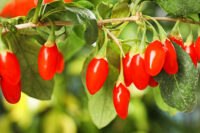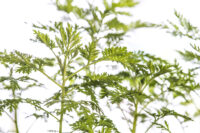In the West we tend to think of heat as inflammation; yet, it can take many other forms as we’ve learned through parts I-V of this blog series. In TCM, heat can exist without inflammation but have other signs of heat. The key to differentiating which type of heat is present is through determining its cause. In this case, heat arises out of some deficiency in the body.
Deficient Heat, or Heat from Deficiency
What is meant by “deficient heat”? It is heat due to some sort of deficiency, usually yin. The cause is from a weakness or lack of some substance in the body, particularly fluids and substance (yin). Deficient heat can be likened to what happens when an engine runs low on oil so it begins to overheat and eventually gets exhausted, burns out, and stops. It is sometimes called “empty heat” since it arises out of emptiness rather than from a full heat from a state of excess. Deficient heat can also lead to “fire” in the body where the heat is stronger and tends to rise upward.
Symptoms of deficient heat include:
- malar flush
- a burning sensation in the soles, palms, and/or chest
- a feeling of heat in the late afternoon and/or evening
- tidal fevers or afternoon fevers
- dry throat at night
- scanty, dark urine
- dry mouth at night
- night sweats
- loss of semen (spermatorrhea)
- irritability
- restlessness
- a sensation of steam or heat rising from the bones (calling steaming bone disorder)
It also includes wasting syndromes such as TB, diabetes, HIV, and chronic hepatitis. The pulse tends to be rapid and floating while the tongue is red without a coat or a peeled coat and generally with scattered cracks.
Major causes of deficient heat include overwork, insufficient rest, chronic dehydration, exhaustion, and depletion. It can occur at any time of year but after the last heat flush of summer in early fall, it can arise from heat building up in the body that over time consumes fluids. Add the dryness of fall, further depleting fluids, and deficient heat can arise more easily now, although of course it can appear any time of the year.
Deficient heat requires rest, lubrication, and nourishing foods and therapies, in other words, building rather than eliminating approaches.
Herbs that Clear Deficient Heat
Herbs that clear deficient heat are cool, sweet, and moistening in nature. This is quite different than herbs that clear excess heat which are cool but bitter and drying. Using these latter herbs in a deficient heat condition would actually make it worse, which means it’s important to not use popular anti-inflammatory herbs for any condition, such as turmeric, because it could cause a further depletion of fluids in the body, worsening any deficient heat symptoms.
Herbs that clear deficient heat are also used in the late stages of warm pathogenic disease where the heat is still present and the fluids are injured. These herbs are often combined with herbs that cool the blood and/or tonify yin. Herbs that cool the blood treat less serious disorders of deficiency heat. They are useful for chronic low-grade febrile or infectious conditions and skin diseases.
The herbs that cool deficient heat I’ll discuss here include lycii root bark, chickweed root, and sweet wormwood. Other herbs that clear heat from deficiency include anemarrhena rhizome, Chinese gentian root, chickweed aerial portion (a different species from the one discussed here), glehnia root, American ginseng root, dendrobium stem, privet fruit, plus turtle shell and carapace.

Fresh goji berries
Lycii Root Bark (cortex) – Lycium chinensis; Di gu pi (Chinese)
While goji berries are now well known in the West, many don’t know they come from the wolfberry plant, which grows throughout much of the United States. The root bark (cortex) of this plant specifically clears deficient heat treating such symptoms as night sweats, chronic low-grade fever, thirst, and irritability, steaming bone disorder, five-palm heat, spermatorrhea, and wasting and thirsting disorder.
Yet, lycii root bark also stops bleeding such as nosebleeds, vomiting of blood, and blood in the stool or urine), skin rashes, herpes, leukorrhea and genital itching. It is excellent for toothaches due to deficient heat (termed rising Kidney Fire) and I have seen it work quickly for this.
As well, lycii bark clears heat in the lungs treating cough, wheezing, and spitting of blood. Internally and externally it is used for skin rashes, including dermatitis from poison oak and ivy, for which it combines well with groomwell (lithospermum). It may also be used as a douche for infections and inflammations of the genitals.
Energy and flavors: Cold, sweet
Organs and channels affected: Kidney, Lung, Liver
Properties and actions: Alterative, antipyretic, demulcent, hemostatic; clears Deficient and Excess Heat, cools the Blood
Chemical constituents: Betaine, cinnamic acid, sitosterol, linoleic acid, linolenic acid, psyllic acid
Contraindications: Diarrhea, loose stools
Dosage and preparation: Decoction, 6-15g. Standard tincture (1:5 @60-75% ABV).

Stellaria dichotoma, near lake Baikal, Russia
Chickweed Root – Stellaria dichotoma; Yin chai hu (Chinese)
This species of chickweed, often called American chickweed, is also used by the Chinese and clears heat from deficiency treating symptoms of steaming bone disorder, afternoon or evening fevers, night sweats, consumption, emaciation with feelings of heat, and malaria. It is also used for childhood nutritional impairment with thirst, fever, and irritability.
While the Western chickweed is a different species, Stellaria media, it is a nourishing demulcent, looks quite similar, and is in the same family as S. dichotoma. The aerial portions of Western chickweed (Stellaria media) are used while the Chinese use the root of Stellaria dichotoma. Both are cooling and sweet, while Western chickweed is also somewhat bitter.
Energy and flavors: Slightly cold, sweet
Organs and channels affected: Lung, Stomach
Chemical constituents: Volatile oil, triterpenes, flavonoids
Properties and actions: Alterative, antipyretic, demulcent; clears Deficient Heat Contraindications: Blood Deficiency without Heat
Dosage and preparation: Standard decoction.

Sweet Annie
Wormwood, Sweet – Herb Artemisia annua; Qing hao (Chinese)
Also called Sweet Annie, this herb both clears heat from deficiency as well as clears summer heat (see part V of this blog series), treating low grade fevers or night fevers with no sweating, headache, dizziness, and steaming bone disorder, again without sweating. It works especially well with those who have yin deficiency who contract external pathogens such as colds or flu.
Sweet wormwood is a major herb used to treat malaria (alternating chills and fever) by both the Chinese and the Red Cross and is useful for people who are traveling to areas where malaria is a risk.
As well, it is used for itchy rashes and nosebleed due to heat in the blood (see part III of this blog series, Herbs that Clear Heat and Cool Blood). It also brightens the eyes and clears heat in the bones and joints.
Energy and flavors: Cold, bitter
Organs and channels affected: Liver, Gallbladder, Kidney
Properties and actions: Alterative, antipyretic, demulcent; clears Deficiency Heat, clears Summer Heat, cools the Blood
Chemical constituents: Sesquiterpenes, flavonoids, coumarins, volatile oil Contraindications: Diarrhea, poor digestion
Dosage and preparation: 6-12g; add at end of decoction
